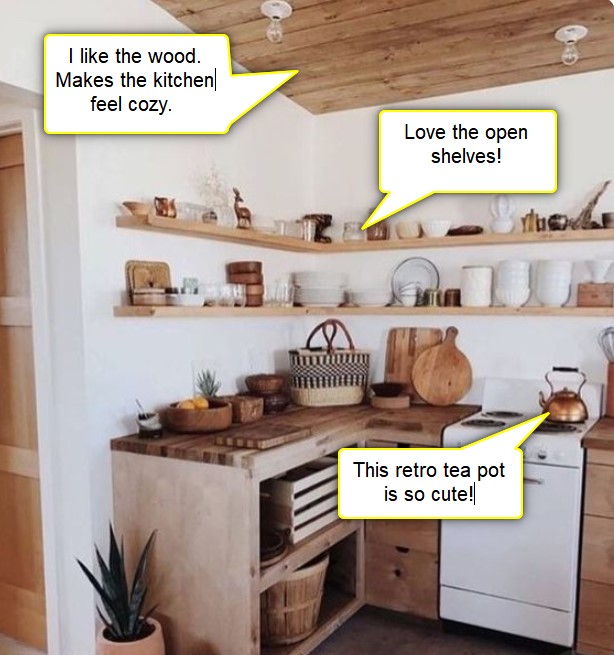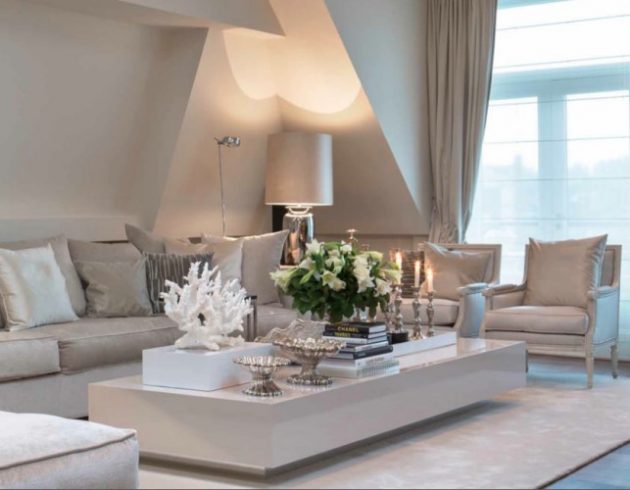Fantasizing about your dream home is a blissful experience. Actually designing your dream home is, more often than not, a savage battle where it’s you against the world. It’s true that you can’t avoid all setbacks. However, if you manage to convey your ideas clearly to your architect, interior designer and contractors, there will be fewer mistakes and “oops, we didn’t know you hated blue” situations.
Here are 5 tips that will help you get your point across quickly and, eventually, get the home you envision.
1. Show and tell
Yes, image clippings from the web are a great way to communicate your design ideas but they are only half the story. Sometimes, you need to add words to describe what you have in mind.
So, what if you added annotations to your clippings?

Clip images from the web and annotate them to help the interior designer get a feel for your style.
You can do this using a free screen recorder like ScreenRec. This particular tool makes it easy to capture screen images, annotate them and share them because it uploads them directly to your own free private cloud account. As soon as you capture your screen, you get a private sharing link that you can send instantly to your architect or interior designer via email or chat. There is also an image gallery where you can browse your past captures at any time.
Besides screen images, you can also capture screen videos with a screen recorder like ScreenRec, i.e. you can create short video clips and record your voice to explain what you like or dislike about a specific design.
2. Love and hate
Your architect or designer must know both what you love and what you hate. This helps them get to know your style better and understand your vision.
For example, you might say, “I want a modern design that feels cozy”. This statement will likely leave your interior designer baffled. What exactly does “cozy” mean?
To clarify your point, you might show him this photo and say, “I love this because it looks minimal, yet it has a few accents like the modern chandelier. I think the chandelier and the chairs give it a character.”

© Slava Balbek & Artem Zavarzin (Image Source)
Then, you might show him the photo below and say “I hate this because it’s too busy. The armchair has too many curves and ornaments and looks like it was made in the 19th century.”

(Image Source)
Of course, these are very simple examples. In real life, it’s best to be as specific as possible. The more information you give your interior designer or architect, the better.
3. Keep an open mind
It’s difficult to let your architect or interior designer make a decision but that’s what you hired them for, right? It’s their job to help you get through option fatigue and narrow your choices down to a few items. It’s also their job to help you see “the big picture”.
For example, while looking at fabric samples for your sofa, you might not be able to imagine exactly how it will look in your living room, but your interior designer most likely can. So, keep an open mind and let her help you choose the materials and furniture that best suit your desired functionality, your vision, and your budget.
4. Be ready to let go
On TV, you see interior designers doing miracles on a shoestring budget and you might expect your designer to be able to do the same. But it’s simply not realistic. These TV shows have hundreds of contractors working 24/7 behind the scenes. Besides, most of the budget comes from the show and the homeowners only pay for the materials.
So, don’t get frustrated when the expenses pile up quicker than you hoped and the time frame stretches farther than you wished. Be ready to let go of details that are not critical. Simply make a list and invest in fewer, well-made items that you will use most often. Don’t get too caught up in the accessories that are hip and modern now because you will probably want to replace them in a few years. Truly, sometimes less is more.
5. Always give feedback (politely)
Honesty is crucial to any human-to-human relationship. So, be upfront about what you like or dislike about your designer’s suggestions. Of course, this is easier said than done when you’re furious. It feels great to vent out and write an angry email but this is not how you’re going to get what you want. If you need to, take 10 seconds to calm down before giving negative feedback and then try to communicate clearly what you don’t like and why.
Conclusion
Designing or redesigning your home doesn’t have to feel like all hell broke loose. You can reduce the chance for mistakes with clear and honest communication. One of the easiest ways to convey your ideas and feedback is by using a free screen recorder. Such a tool allows you to capture and annotate screenshots or even record screen videos to get your point across.
In any case, you have to be prepared for mishaps because this is a complicated long-term project involving lots of people. Keep an open mind, let your interior designer or architect advise you and be ready to let go of some of your initial ideas. In the end, what matters is that you get the best look and functionality within your budget.














